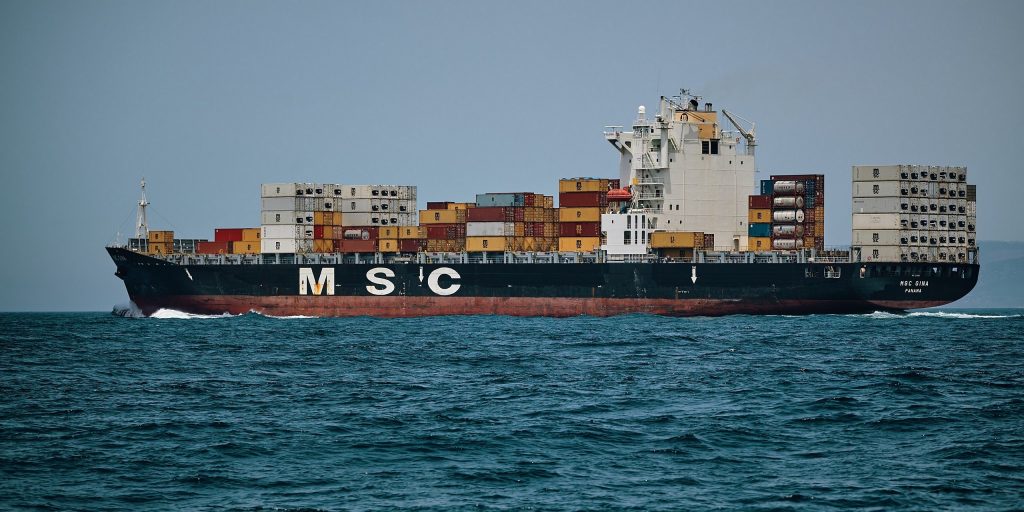
Melissa Peralta, Senior Economist at TTX
The surge of cargo that moved through U.S. ports in December increased both wholesale and retail inventories and “until that backlog is taken care of, it will likely depress container imports for the next couple of months,” said Melissa Peralta, senior economist at TTX, the railcar pool that provides equipment for U.S. railroads.
She noted that for the first time in 15 years, imports from China were highest in the fourth quarter of a year, with most of the surge in 2018 coming in December, when volumes were up 27 percent after average growth of 6 percent in the first 11 months of 2018.
Peralta presented the information at Port of Long Beach’s recent “Pulse of the Ports 2019 Peak Season Forecast.”
She predicted container volumes will grow just 1.8 percent this year, compared to the 6.1 percent growth seen in 2018, in large measure because of the high bar that December imports set.
“By the time we get to late 2019, year-over-year comparisons will be very, very difficult. It is highly unlikely to imagine a scenario in which, certainly December, but probably overall fourth-quarter volumes are not negative due to these strong comparisons,” she explained.
Enjoying our insights?
Subscribe to our newsletter to keep up with the latest industry trends and developments.
Stay Informed
Tariff Pressure
She noted many of the imports in December were motivated by a desire to pull forward inventories because of threats by the Trump administration that tariffs could be increased.
The tariff increase was delayed, and is still unresolved, and she said there is still a risk that imports could be impacted this year by a change in tariffs.
“My fear is that we could have another cycle where freight pulled forward and that we have an extremely early peak this year,” she said, pointing out that over the past five years, peak season has been arriving earlier than in the past.
Benjamin D. Conwell, a senior managing director at Cushman & Wakefield, agreed that peak season is occurring earlier, starting in July and that there has been a “smoothing out of demand for our customers.”
Peralta also is forecasting a slowdown in the U.S. economy, with GDP growing 2.7 percent in 2019 compared to 2.9 percent 2018. She noted that the economy last year grew at its highest level since the 2008-09 recession largely because of the Tax Cuts and Jobs Act of 2017.
If the effect of the tax cut was eliminated, she said 2018 would have looked “pretty much like any other year in the post-recession era” and without the boost, “it could even have somewhat of a chilling effect on the economy.”
First Quarter Growth
First-quarter economic growth also has been affected by the government shutdown that extended from Dec. 22 to Jan. 25.
Still, she said, it seems like the underlying economic momentum will be enough to carry the strong to moderate economic growth into the third quarter of the year.
One exception to the broad economic story, she said, is the housing industry.
TTX believes housing starts will increase this year, but at a weak pace. That’s a negative for the shipping industry because many building components and pieces of furniture are imported. She also believes vehicle sales will have another weak year.
Low Sulfur Fuel
Peralta noted that with the requirement by the International Maritime Organization that ships not equipped with engine exhaust scrubbers use low sulfur fuel beginning next year, there is a potential that more container freight from Asia could return to West Coast ports instead of moving on all-water services to East Coast ports.
“At TTS we think, the all-water share after having increased for several years may flatten out in this year or into next year,” she said, but added there was a great deal of uncertainty about the issue.
Peralta said the increase in cost of fuel could amount to $200 per 40-foot container.
Allen Clifford, executive vice president at Mediterranean Shipping Co., said the amount of his company’s bunker recovery charge will be calculated later this year, closer to the fourth quarter. But he cautioned Peralta’s estimate might turn out to be too low, depending on what happens to oil prices, and also said it was uncertain whether there will be sufficient quantities of low sulfur fuel available to meet demand from shipping companies and whether this will affect shipping capacity.
He noted that each shipping line will develop its own bunker formula to adjust for the higher cost of low-sulfur fuel, but at MSC the charge will be customized for each trade — not only taking into account the price of fuel but also the route, the size ships MSC utilizes and cargo mix.
Increase Cost Paid by Shippers
He said carriers cannot afford to foot the increased cost of fuel and that it will be paid for by shippers.
“Each of us deserves to make a remunerative return on our investment,” he said.
Conwell noted there is still strong demand for distribution space by importers, both near the Port of Long Beach and Port of Los Angeles, as well as in the so-called “Inland Empire” that includes parts of Riverside and San Bernardino counties in Southern California. The demand is as strong as it was in the “go-go period of 2002 to 2007,” and the region is seeing a great deal of speculative space under construction and little risk of overbuilding, in the area, he said.
Outlook for Exporters
Elena Asher, assistant director for Dairy Farmers of America, talked about the outlook for exporters.
She noted there is a surplus of milk in the U.S. and the export market provides an alternative market for U.S. dairy farmers. Most of that surplus milk is converted into milk powder, which can be exported in dry containers.
When retaliatory tariffs from China increased tariffs on U.S. milk from 10 percent to about 30 percent, most contracts were canceled and led her organization to develop “a global strategy, not just a China strategy.”
“Our salespeople had to go into scramble mode, to start pursuing these other markets because the milk never stops. We have two harvests a day and we have to dry it and we have to turn it into something else and it is perishable.”
The industry is seeking to expand sales in countries in Southeast Asia, Latin America, the Middle East and North Africa and expects exports to grow this year.
She said companies doing business at the Port of Long Beach can help dairy exporters by improving terminal efficiency, turning trucks more quickly and maintaining good labor relations with the International Longshore and Warehouse Union.
Mario Cordero, executive director of Port of Long Beach, highlighted the $1 billion the port is spending to improve rail service connecting the port with inland locations.
“We want to move containers in a more efficient manner and a more environmentally friendly manner,” he said.
(from American Shipper)






















